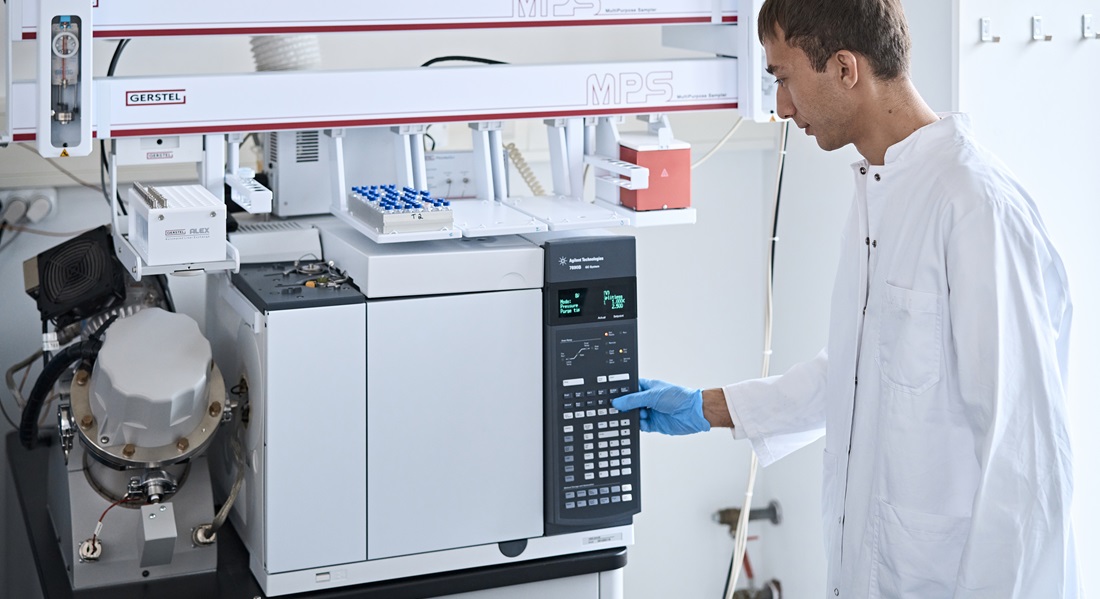GC-MS Platform

Description
The Gas Chromatography-Mass Spectrometry (GC-MS) platform at the Foodomics Laboratory consist of three advanced systems:
- GC-TOF-MS (LECO Corporation)
The GC-TOF-MS is a high-throughput platform equipped with a dual-arm autosampler system (MPS from Gerstel) for automated sample preparation, derivatization, and injection, including an Automatic Linear Exchange System (ALEX). This system supports untargeted metabolomics and targeted metabolite profiling for up to 300 samples in a single sequence. It is primarily used in foodomics and metabolomics studies to screen molecules in food, plant, and various biofluids (blood, urine, gut content) after metabolite extraction, methoximation, and trimethylsilylation-based derivatization. The Time-Of-Flight (TOF) mass analyzer enables a rapid acquisition rate, providing high chromatographic resolution and sensitivity.
- GC-TQ-MS (Bruker Daltonics)
The GC-TQ-MS offers high selectivity and sensitivity for targeted quantitative analysis. Its triple quadrupole configuration facilitates multiple reaction monitoring (MRM), ensuring precise quantification of trace-level compounds in complex matrices. In foodomics, the GC-TQ-MS is widely used for detecting pesticide residues, contaminants, and processing-induced toxins. In plant metabolomics, it is employed for the targeted quantification of bioactive compounds, plant hormones, and volatile organic compounds, supporting quality control and the assessment of plant responses to environmental stressors.
- GC-SQ-MS (Agilent Technologies)
The GC-SQ-MS is a robust system designed for routine qualitative and quantitative analysis of volatile and semi-volatile compounds. It features a single-arm multipurpose autosampler (MPS from Gerstel) capable of analyzing up to 200 samples simultaneously. This system is configured to screen edible oils, beverages, plant extracts, and gut content samples for a broad range of molecular classes, including but not limited to chain fatty acids, fatty acids, amino acids, organic acids, and terpenes. The single quadrupole mass analyzer provides an optimal balance between sensitivity and dynamic range for both qualitative and quantitative analysis.
Options and requirements for use
- All platforms are operated by trained personnel and can be booked by contacting the responsible people.
- Our experts offer comprehensive support in study design, sample preparation, post-acquisition data processing, and data analysis.
- The required sample amount for analysis ranges from a few milligrams to a gram, depending on the sample type and the analysis objective.
When initiating a research collaboration with the University of Copenhagen, a cooperation agreement must be established. Different types of agreements are available depending on the nature of the collaboration. For more information, visit: collaboration.ku.dk/cooperation-agreements
Associate Professor Bekzod Khakimov (bzo@food.ku.dk)
Postdoc Paraskevi Tsermoula (paraskevi@food.ku.dk)
Contact
 Bekzod Khakimov,
Bekzod Khakimov,
Associate Professor
bzo@food.ku.dk
 Paraskevi Tsermoula,
Paraskevi Tsermoula,
Postdoc
paraskevi@food.ku.dk
